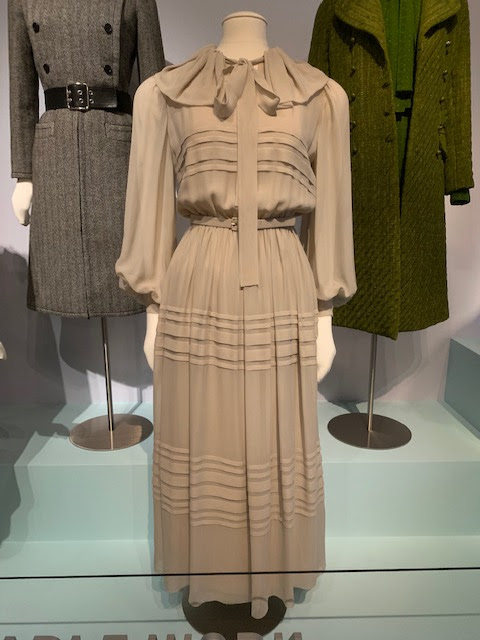The Lacemaker, oil on canvas, National Gallery of Art, Andrew W. Mellon Collection
The truth comes out.
Whether it’s fake Vermeer or real Vermeer, the wait at the National Gallery of Art is worth it.
A few Sundays ago the delay to get in the Vermeer galleries was 20 minutes.
Between Christmas and New Year's, the wait had increased to about two hours, with reservations closing for the day at 2 p.m., a docent told me.
She advised getting on the virtual list to see Vermeer (this is the last weekend!) no later than noon, and even better, 10 a.m. when the Gallery opens.
The National Gallery closes every day at 5 p.m. and she said going through the show takes only 15 minutes but like my experience, "there's a lot of reading, and folks are staying longer."
A Lady Writing, c. 1665, oil on canvas, National Gallery of Art, Gift of Harry Waldron Havemeyer and Horace Havemeyer, Jr., in memory of their father, Horace Havemeyer
The Smiling Girl , oil on canvas, National Gallery of Art, Andrew W. Mellon Collection
The Vermeer galleries are not large, only big enough to accommodate a precious few at one time.
The museum's website says visitors may get on the virtual list at any of the information desks.
Girl with the Red Hat, c. 1669, oil on panel, National Gallery of Art, Andrew W. Mellon Collection
Girl with a Flute, c. 1669/1675, oil on panel, National Gallery of Art, Widener Collection
In October, the Gallery announced that what had been thought to be a Vermeer is not a Vermeer, discovered after decades of research by curators, conservators, and scientists.
Who said covid was all bad?
The covid time break permitted the Vermeer team to conduct exhaustive research, expanding a half-century of technical study, to reveal that the work was rendered by an associate, a freelancer, or even a family member at a possible Vermeer school.
Because only 35 Vermeers are known to exist, researchers have thought for years that Vermeer had no students, but that was before a deep dive which used X-ray fluorescence imaging spectroscopies to prove that Vermeer experimented with new techniques, post-dating one work from 1666-1667 to c. 1669.
The National Gallery owns three (previously four) Vermeer originals which rarely go off-view.
Can you pick out the real Vermeers from the ones shown here? (Answers are at the end.*)
Once you see the differences, it's not terribly difficult to recognize the genius from "Vermeer nots," two which were found to be forgeries after they were admitted to the museum in 1937.
Go here to read about more about the mysterious Dutch artist (1632-1675) who produced many works with light coming from a window on the left, mostly of women, some with men who seem to be trying to get the young women drunk. (Some things never change!)
Vermeer's Secrets was organized by the National Gallery of Art and curated by Marjorie E. Wieseman, curator and head, and Alexandra Libby, associate curator, department of Northern European painting, National Gallery of Art.
Conservation research and technical imaging at the National Gallery were provided by Dina Anchin, associate paintings conservator; John K. Delaney, senior imaging scientist; Kathryn A. Dooley, imaging scientist; E. Melanie Gifford, conservation scientist (retired); and Lisha Deming Glinsman, conservation scientist (retired).
Enjoy!
What: Vermeer's Secrets
When: Through January 8, 2023. The National Gallery hours are 10 a.m. - 5 p.m. daily.
Where: West Building, Ground Floor, G33-G34, National Gallery of Art, 6th and Constitution, Washington
How much: Admission is always free at the National Gallery of Art.
Metro stations for the National Gallery of Art:
Smithsonian, Federal Triangle, Navy Memorial-Archives, or L'Enfant Plaza
For more information: (202) 737-4215
Accessibility information: (202) 842-6905
* "Vermeer nots": Girl With a Flute (new discovery!). Two long-ago discovered forgeries after they entered the museum's collection in 1937 are The Smiling Girl and The Lacemaker, both c. 1925.
patricialesli@gmail.com




















































